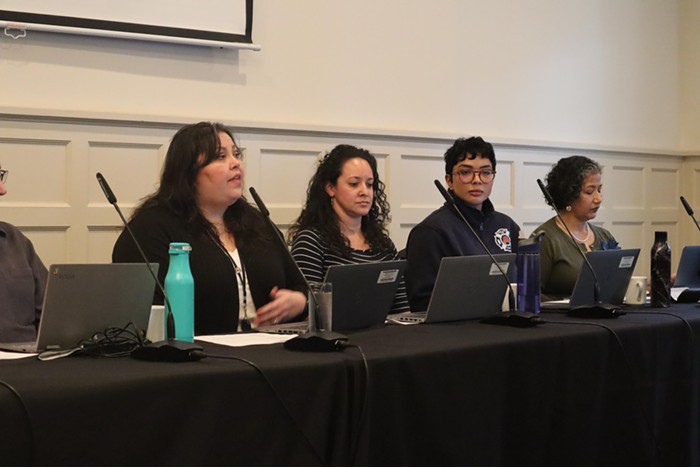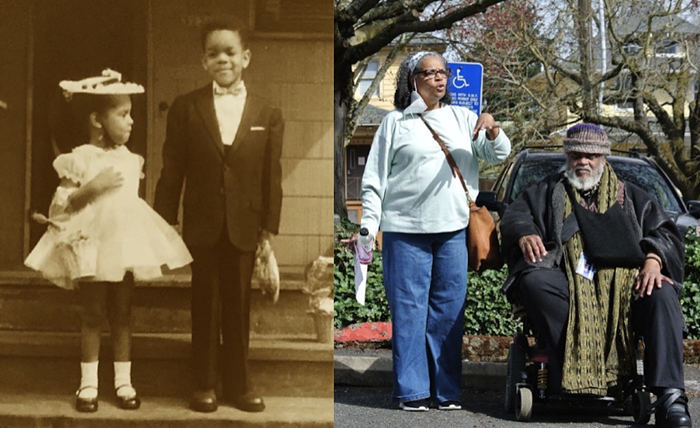Ethiopian cuisine is very much a product of ancient trade routes. There are hints of sub-continental curries, rich Eastern European meat dishes, and fragrant Middle Eastern mujadara; this is food that resonates through a whole spectrum of gastronomic experiences. Still, the combination of spices, both familiar and specific to the topographically diverse African nation, renders the delicious mounds of meats, lentils, and vegetables, arranged on a spongy plane of injera, completely unique.
Bete-Lukas begs to be discovered. It hangs above SE 50th Avenue with minimal signage. Its entrance, at the top of a steep stairway, is a relatively unmarked glass door, which hides a dimly lit—some might say romantic—interior. This might be why, in my trips there, the tables in the tastefully appointed dining room were dominated by smiling couples. Could it be Ethiopian cuisine is the perfect date food? It's possible. The dishes are meant to be shared and eaten with the fingers; what better way to learn about your dining companion than comparing notes on the ye-beg alicha—a lamb stew spiced with lovely hints of cumin and toasty dry-fried onion—without either of you worrying about which fork to use?
For many, Ethiopian food is synonymous with a burning palate. However, at Bete-Lukas, the heat is turned down. This is thoughtfully seasoned food. The chefs, with their bright headscarves, have left plenty of room for base ingredients to speak. The gomen besiga, for instance, with its combination of sautéed sirloin and kale, allows the greens to come forward, like less vinegary, ultra-earthy collards. The same is true for the kitfo—made of fine ground beef mixed with clarified butter, red peppers, and cardamom, kitfo is traditionally served raw. Bete-Lukas has allowed the unique, mild iron tones of uncooked beef to dominate the dish. The cardamom and butter add richness and depth while the pepper adds a low burn.
Still, some items, like the luscious wots (essentially Ethiopian stews), practically burst with flavor. The vegetarian misser wot combines lentils with onion and a berbere sauce made from an aromatic mélange of spices. The lentils here are rich, nearly creamy, with flavor like a mild Southwestern American chili.
Other vegetarian dishes have just as much going for them. The fosolia, lightly spiced and sautéed green beans, has a touch of sweetness and verdant vibrancy, while the cabbage, potatoes, and carrots of tikel gomen build upon that sweetness, redoubling the natural sugars of the tender carrots and cabbage. If I were to become a vegetarian, Bete-Lukas would certainly be a regular dinner outing.
There are some misses on the menu, mostly due to Bete-Lukas' subtle use of spices. The ye-beg tibs—lamb cubes and jalapeno—is bland despite pepper heat, and an appetizer of veggie sambusa, made of triangular pastry shells concealing a warm burst of vegetables, is so mildly spiced as to render it almost tasteless. Also, the sourdough-like injera is not as tangy as others I've had.
Still, these are small bumps in an otherwise excellent menu, executed with utmost care, and served with a charming mix of humor and education. It's obvious the folks at Bete-Lukas want pure enjoyment on the part of their patrons, and it's easy to comply. The good feeling and fine flavor here may recall the best of many other ethnic cuisines, but it's done with the grace and good humor that also evokes the best place to experience any region's cuisine: home.



















